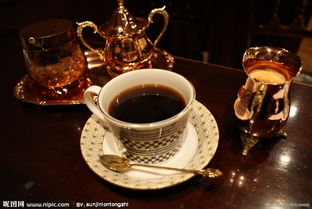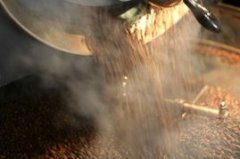Seven steps of washing method for the treatment of raw beans
Because of the lack of sufficient sunshine in the West Indies, the Dutch introduced the "washing method", also known as "WIB", around 1740, which is different from the traditional sun method, also known as "OIB". Coffee beans exported from Java are often marked "WIB", which means "washed beans". The treatment steps of the washing method are as follows:
1. Select beans: put the harvested fruit in a water tank and soak for about 24 hours. At this time, ripe fruit will sink, while immature and overripe fruit will float up and can be removed.
2. Remove the pulp: use a machine to remove the fruit and pulp, leaving only the coffee beans wrapped in endocarp. At this time, there is a layer of mucous membrane on the outside of the beans, and the process of washing is to wash this layer of mucous membrane.
3. Fermentation: the adhesion of the mucous membrane is very strong and it is not easy to remove. It must be placed in the tank for about 18-36 hours to ferment and decompose the mucous membrane. There are two methods of fermentation, namely wet fermentation and dry fermentation. As the name implies, the former adds water and the latter does not add water. In the process of fermentation, the seed and internal pulp will produce special changes, which is a step that most affects the flavor of coffee in water washing. Some farms add hot water or enzymes to speed up fermentation, which has a negative impact on quality and is not popular with selected coffee lovers. Sigri, a famous coffee farm in Papua New Guinea, prides itself on its unique washing method. Their fermentation period lasts for 3 days and is washed with clean water every 24 hours, so they can produce delicious Sigri Coffee.
4. Washing: farms that use the washing method must build washing ponds and be able to introduce an endless supply of live water. During the treatment, the fermented beans are put into the pool and passed back and forth, using the friction of the beans and the power of running water to wash the coffee beans until smooth and clean.
5, drying: after washing, at this time, the coffee beans are still wrapped in the pericarp, the moisture content is up to 50%, must be dried, the moisture content is reduced to 12%, otherwise it will continue to ferment, mildew and rot. The better treatment is to use sunlight to dry, although it takes 1 to 3 weeks, but the flavor is very good and very popular. In addition, some places use to stimulate drying, greatly shorten the processing time, so that the flavor is not as good as sun-dried coffee. The aforementioned Sigri Farm uses the hot equatorial sun to dry its coffee beans. No wonder its Sigri Coffee has won quite a lot of praise in the select coffee market.
6. Shelling: the dried beans can be stored in a warehouse or handed over to the factory for shelling to remove endocarp and silver film.
7. Selection and grading: like the sun-drying method, washed coffee beans are selected and graded to remove defective beans, ensure better quality, and then give them to exporters to sell around the world.

Important Notice :
前街咖啡 FrontStreet Coffee has moved to new addredd:
FrontStreet Coffee Address: 315,Donghua East Road,GuangZhou
Tel:020 38364473
- Prev

Fine Coffee knowledge eight professional roasting methods of coffee beans
The eight stages of roasting: the roasting methods of professional coffee are usually divided into the following eight ways. 1. Very shallow baking (LIGHT Roast): the degree of baking; very shallow baking, also known as shallow baking. The lightest roasting degree of all roasting stages, the surface of the coffee beans is a light cinnamon color, its taste and aroma are insufficient, this state is almost undrinkable. It is generally used for testing, but rarely for products.
- Next

Four stages of professional coffee bean roasting
1. Steaming stage: 00-10min; Dou-140C; this is the most important process of the endothermic reaction of coffee beans. At this stage, the beans will slowly expand, the color will change from green to white, and the moisture will slowly evaporate from the bean heart because of the heat absorption of the beans. Mother's mouth found that whether the coffee tastes good or not depends on this stage, when the water evaporates too quickly, it is easy to cause the bean heart not to be ripe.
Related
- Beginners will see the "Coffee pull flower" guide!
- What is the difference between ice blog purified milk and ordinary milk coffee?
- Why is the Philippines the largest producer of crops in Liberia?
- For coffee extraction, should the fine powder be retained?
- How does extracted espresso fill pressed powder? How much strength does it take to press the powder?
- How to make jasmine cold extract coffee? Is the jasmine + latte good?
- Will this little toy really make the coffee taste better? How does Lily Drip affect coffee extraction?
- Will the action of slapping the filter cup also affect coffee extraction?
- What's the difference between powder-to-water ratio and powder-to-liquid ratio?
- What is the Ethiopian local species? What does it have to do with Heirloom native species?

